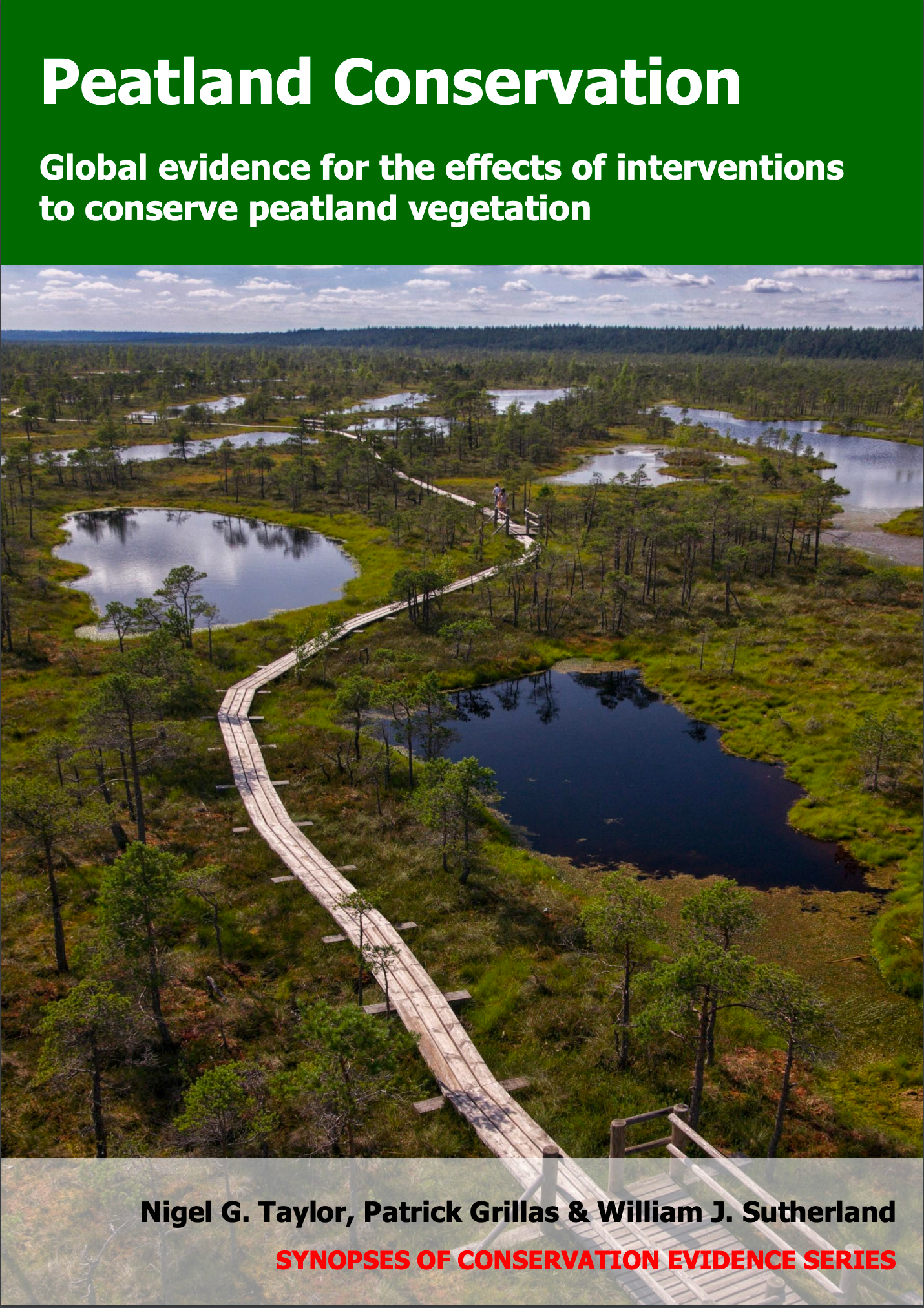Irrigate peatland (without planting)
-
Overall effectiveness category Unknown effectiveness (limited evidence)
-
Number of studies: 2
View assessment score
Hide assessment score
How is the evidence assessed?
-
Effectiveness
55% -
Certainty
30% -
Harms
1%
Study locations
Supporting evidence from individual studies
A replicated, paired, controlled, before-and-after study in 1993–1994 in a historically mined bog in Quebec, Canada (Rochefort & Bastien 1998) found that irrigated plots contained more Sphagnum moss shoots than unirrigated plots after one growing season, but a similar number of Sphagnum shoots after two. After one growing season there were more Sphagnum shoots in irrigated plots (210 shoots/m2) than plots that were not irrigated (75 shoots/m2). However, after two growing seasons the number of moss shoots did not significantly differ between treatments (irrigated: 80; not irrigated: 50 shoots/m2). In spring 1993, three pairs of plots were established on slightly drained, bare peat. Three plots (one plot/pair) were irrigated during the summer, using sprinklers and water stored on the bog. The other plots were not irrigated. In autumn 1993 and 1994, all Sphagnum shoots were counted in forty 30 x 30 cm quadrats/plot.
Study and other actions testedA before-and-after study in 1996–1998 in a degraded fen in Germany (Richert et al. 2000) reported that irrigated plots developed cover of wetland- and fen-characteristic herbs at the expense of dry grassland species. All data were reported as graphical analyses and the results were not tested for statistical significance. Over two years of irrigation, cover of fen-characteristic forbs increased. The same was true for cover of wetland-characteristic species like cattail Typha latifolia and common rush Juncus effusus. Meanwhile, cover of dry grassland species such as tall fescue Festuca arundinacea decreased. No colonisation by sedges Carex spp. or common reed Phragmites australis was observed. Within the irrigated fen, plant communities differed between drier areas (high water table but never flooded) and wetter areas (sometimes flooded). In 1996, the surface of a drained fen was irrigated with lake water. Vegetation cover was recorded before irrigation (1996) and after one or two years or irrigation (1997, 1998) in four representative 16 m2 plots.
Study and other actions tested
Where has this evidence come from?
List of journals searched by synopsis
All the journals searched for all synopses
This Action forms part of the Action Synopsis:
Peatland Conservation
Peatland Conservation - Published 2018
Peatland Conservation





)_2023.JPG)














